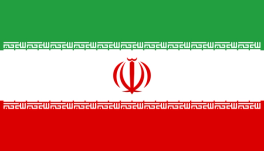This goes
to space
Khayyam
Roscosmos will launch the Khayyam "remote earth probing spacecraft" atop its Soyuz 2.1 rocket for the Islamic Republic of Iran. The rocket will be equipped with a Fregat upper stage and liftoff from the Baikonur Cosmodrome.
The mission will also launch 16 smallsats designed by university programs, private companies, and non-profits:
CubeSX-HSE-2
Monitor-1
UTMN
CYCLOPS
Siren
KAI-1
Kuzbass-300
Skoltech-B1
Skoltech-B2
Polytech Universe-1
Polytech Universe-2
Vizard
Geoscan-Edelweis
MIET-AIS
ISOI
ReshUCube
"Russian spacecraft is designed for scientific and technological research, including the development of inter-satellite communications channels, measurement of electromagnetic radiation, remote earth probing and monitoring of the ecological situation," Roscosmos said.
According to the Islamic Republic News Agency, the Khayyam satellite will be "improving productivity in the field of agriculture, careful monitoring of the country's water resources, natural hazard management... dealing with deforestation, monitoring mines and mineral discoveries."
Iran previously launched three satellites into space:
- The Sina-1 was built and launched in 2005 by Russia,
- The Nour-1 and the Nour-2 were launched by the IRGC in April 2020 and March 2022
According to The Washington Post, Khayyam will be used by Russia to monitor troop movements in Ukraine and claims "The pending launch is the latest indicator of increased military and political cooperation between Moscow and Tehran."
Excerpt below:
"Russia’s Roscosmos space agency announced an Aug. 9 launch date for the satellite, dubbed “Khayyam” after a 12th-century Persian mathematician, in fulfillment of a deal negotiated with Iran over nearly four years. Russia agreed to build and launch the Kanopus-V system, which will include a high-resolution camera that would give Tehran unprecedented capabilities, including near-continuous monitoring of sensitive facilities in Israel and the Persian Gulf.
But Iran may not be able to take control of the satellite right away. Russia, which has struggled to achieve its military objectives in its five-month-old assault on Ukraine, has told Tehran that it plans to use the satellite for several months, or longer, to enhance its surveillance of military targets in that conflict, the two officials said on the condition of anonymity, citing sensitivities surrounding intelligence collection.
On this
rocket
Soyuz 2.1a/Fregat
The Soyuz 2.1a/Fregat-M rocket as it is known to Roscosmos, the Russian federal space agency, is also called the Soyuz ST-A when used by Arianespace for European launches.
It is built by the Progress Rocket Space Centre (TsSKB-Progress) under the jurisdiction of Roscosmos.
The Soyuz 2.1a/Fregat-M provides medium-lift capability.
It can be launched from all three Roscosmos launch sites: the Baikonur Cosmodrome in Kazakhstan, the Plesetsk Cosmodrome in western Russia, and the Vostochny Cosmodrome in eastern Russia.
For Arianespace, it is primarily launched from Guiana Space Centre in South America, making it the only -- at present -- rocket to launch from more than one continent.
Image credit: CC "Yuzhny" / TSENKI / Roscosmos
From this
launch site
Site No. 31/6 - Baikonur Cosmodrome, Kazakhstan
August 9, 2022
Site 31/6 has been an active launch pad since January 14th, 1961. It has been used to launch R-7A, Vostok, Voskhod, Polyot, Molniya, and previous versions of Soyuz rockets.
It is currently used exclusively to launch the Soyuz 2 rockets.
A workhorse pad for satellite and robotic missions, it took up crew launch duties for Russian missions to the Station beginning in April 2020.
Baikonur Cosmodrome
Located in southern Kazakhstan, Baikonur was the world's first spaceport and the launch site for humanity's first orbital satellite, Sputnik, and Yuri Gagarin's first human spaceflight on April 12th, 1961.
Originally built as the Soviet Union's launch base, the collapse of the Union led to the Kazakh government leasing Baikonur to Russia until 2050.
The spaceport is operated both by Roscosmos, the federal space agency of the Russian Federation, and the Russian Aerospace Forces, a branch of the Russian Armed Forces.
Image: GK Launch Services / Roscosmos
Here's where to view Khayyam
Viewing Sites
GET THE SUPERCLUSTER APP
THE SUPERCLUSTER PODCAST
A podcast exploring the amazing milestones that changed space history, the wildest ideas that drive our future, and every development in this new Golden Age of Space.
SUPERCLUSTER ON PATREON
Your support makes the Astronaut Database and Launch Tracker possible, and keeps all Supercluster content free.
SUPPORTCOPYRIGHT 2021 SUPERCLUSTER LLC


